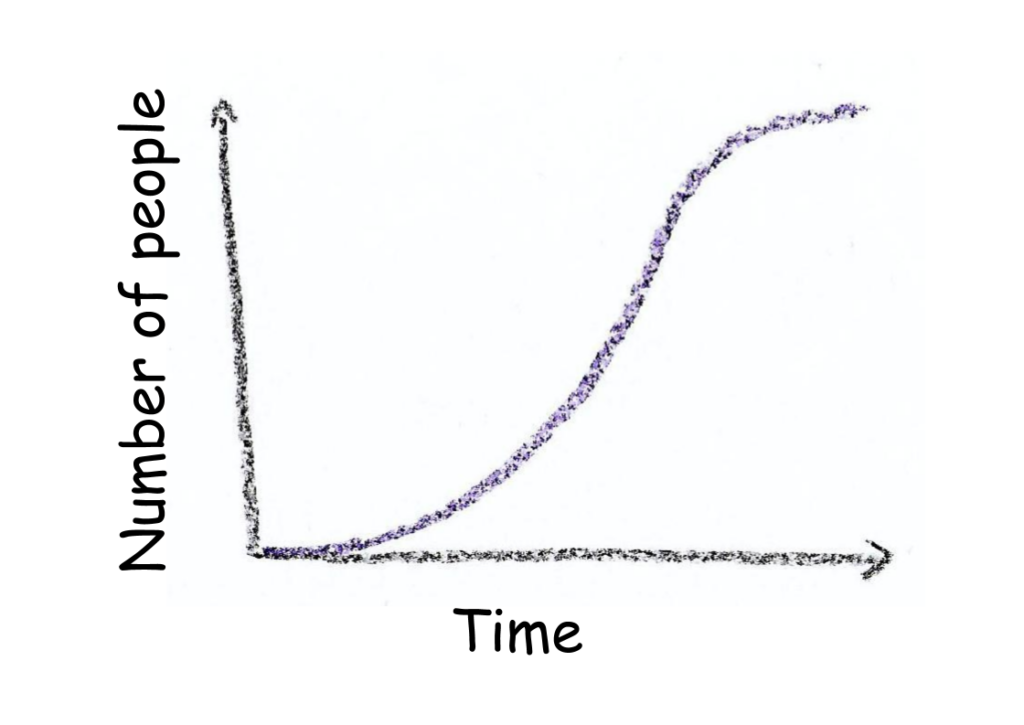Spread of Innovations
Technologies that facilitate or improve life and that do not entail any other direct costs or disadvantages to the user are popular and preferred by people. When new technologies are developed, there are often only a few in the population who have access to them, or who are willing or able to try out this new technology (for example, because their acquisition is still expensive, or because the technology is not available everywhere, or because not so many people know how to use the technology).
The more people are connected to each other, the more they become aware of which technologies other people have. And the more people in one’s social network are using this technology, the more other people are starting to imitate those people by also wanting that technology. Especially when people see that the technology improves users’ lives and makes certain things easier, or that people that own such technologies are being admired by others, they have a great incentive to use this technology as well. This is particularly the case when people observe that others in their immediate circle (family and friends) or people who resemble them have this technology.
As more and more people want to have a new technology, more and more of these technologies are being manufactured, which also reduces the cost of their adoption or improves access to technology. This increases again the amount of people who have the technology, and others continue to notice and adopt it. After some time, the majority of people in a population have this technology, and it eventually becomes part of “normal life” to have this technology.
How can we use our tendencies to adopt innovations and imitate others in our social networks in a way that promotes sustainability? How can we increase the attractiveness and prestige of sustainable consumption and lifestyles?

The spread of new technologies and other innovations in a population often follows a so-called sigmoid, or s-shaped, curve:
At the beginning, only a few people have access to or are willing or able to adopt and use the new technology. After some time, more people notice it around them, as well as the fact that the technology is beneficial to the user, and are willing to adopt it as well. More and more people are finally noticing, hearing about it from others, and adopting it, and the technology spreads faster and faster in the population. Furthermore, because of increased demand and production, the price of the technology falls, making it even more attractive.
Finally, some people are left who are not using it (because it has no benefit for them, or it is still not available for them, or they cannot afford it), and so the technology does not spread any more or only very slowly to the rest of the population.
The adoption of various technologies in US households over time (in percent of all households)
The development of the number of people with a mobile phone subscription per 100 people in some countries or regions.
The development of the proportion of internet users in the population of some countries or regions (in percent).

